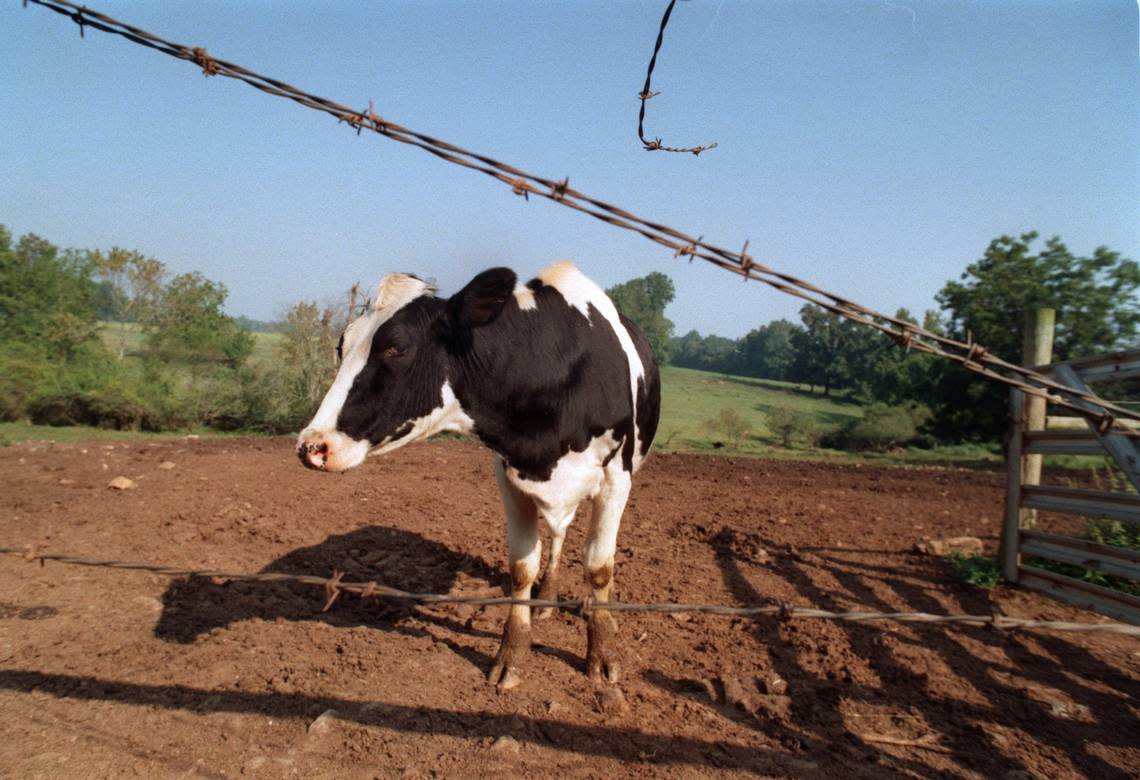Cow at South Carolina facility tests positive for mad cow disease

A cow at a South Carolina beef processing facility tested positive for atypical bovine spongiform encephalopathy, better known as mad cow disease. It is the seventh case of mad cow disease ever recorded in the United States, according to a statement released by the U.S. Department of Agriculture on Friday.
The animal, who came from a herd in Tennessee, displayed symptoms of the disease and was quickly euthanized shorty after arriving at the facility, according to the U.S. Department of Agriculture.
“This was an isolated case that occurred. The United States has a robust system of safeguards designed to protect human and animal health against BSE. Those safeguards were successful and prevented entry into the public and animal food supply systems,” said Michael Neault, South Carolina State Veterinarian and director of Clemson University Livestock Poultry Health.
The U.S. Department of Agriculture has said that the beef cow, which was approximately 5 years old, “never entered slaughter channels and at no time presented a risk to the food supply or to human health in the United States.”
It is the first case of mad cow disease identified in South Carolina. Veterinary officials in South Carolina and Tennessee are in the process of gathering information as part of an investigation, according to the Department of Agriculture.
“We do not expect any trade impacts as a result of this finding,” the department confirmed in a statement.
Cows suffering from bovine spongiform encephalopathy often suffer from weight loss and have trouble walking and getting up, or display and unusual gait, according to the Food and Drug Administration. An infected cow may also act very nervous or violent, giving rise to the better-known name “mad cow disease.”
While it was unknown what symptoms the cow was displaying, the Department of Agriculture said that the cow tested positive after it was deemed unsuitable for slaughter and euthanized.
The disease, which is believed to be caused by a protein known as a “prion,” is always fatal in cows and is divided between “classical” and “atypical” forms of the disease. The classical presentation occurs when a cow has consumed tainted feed containing bovine brain or spinal chord. In atypical cases, the disease is thought to develop spontaneously.
While the disease is cannot be spread through “casual contact,” and therefore is not considered contagious, humans can contract a rare and fatal form of the disease called variant Creutzfeldt-Jakob disease by eating tainted beef products.
With the exception of the first case of the mad cow disease brought to the United States from Canada in 2003, cases have been atypical, according to the Department of Agriculture.
The disease first became prevalent in the 1980s after bovine brains and spinal cord began being included in cow feed as a source of protein. In 1997, the FDA implemented regulations that prohibit the feeding of most mammalian proteins to cattle, which the Department of Agriculture described as the “most important measure to prevent the transmission of disease to cattle.”
Since 1990, the agriculture department has maintained a surveillance program to monitor the disease. Past cases have been identified in Washington state, Texas, California, Florida and twice in Alabama.


